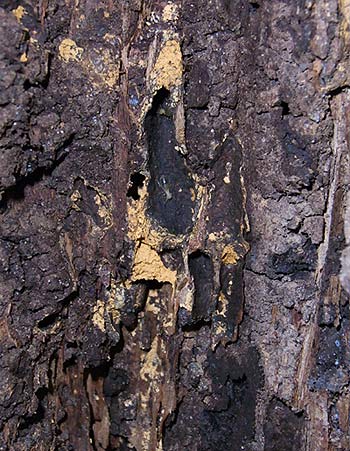Amitermes is an interesting genus of termite, with many species distributed worldwide. The most well known are the mound building species from Australia, Amitermes meridionalis, the so-called Magnetic Termites. Amitermes species occur worldwide, and build a variety of nests ranging from subterranean to surface mounds, to aerial nests.
In South East Asia (Malaysia, Borneo, Sumatra) there occurs Amitermes dentatus (Haviland), a small, termite that feeds on decaying timber in the form of dead standing tree trunks, decaying logs, and stumps. They also appear to build their nests below and extending within standing dead timber (in forests and secondary forests). This is an interesting species which exhibits neoteny (nymphs turning into reproductives while retaining certain juvenile characteristics).
Amitermes dentatus nests may sometimes reveal neotenic workers and small sized soldiers that appear morphologically different from the regular soldier; these “minor” soldiers are probably instar aberrations (there being no true minor soldier caste to begin with).
The soldiers have sickle shaped mandibles with two small teeth on the inside, and are about 0.5-0.6 cm long. They have enlarged looking heads in part due to a prominent fontanelle. The workers look typical of many forest subterranean termites with dark intestinal systems, and curiously, have been observed to have a higher than normal tendency towards cannibalism in the event of prolonged food shortage (termites do cannibalize each other in certain circumstances).

Above – Amitermes dentatus

Above – Amitermes dentatus

Above – The nests are located in and below standing dead tree trunks. The black walls are a mixture of earth and excrement.

Above – Workers are quick to repair damage to the nest

Above – Amitermes dentatus alate reproductive (without wings).

Above – Amitermes soldier. The mandibles have a small tooth on either inward side.
